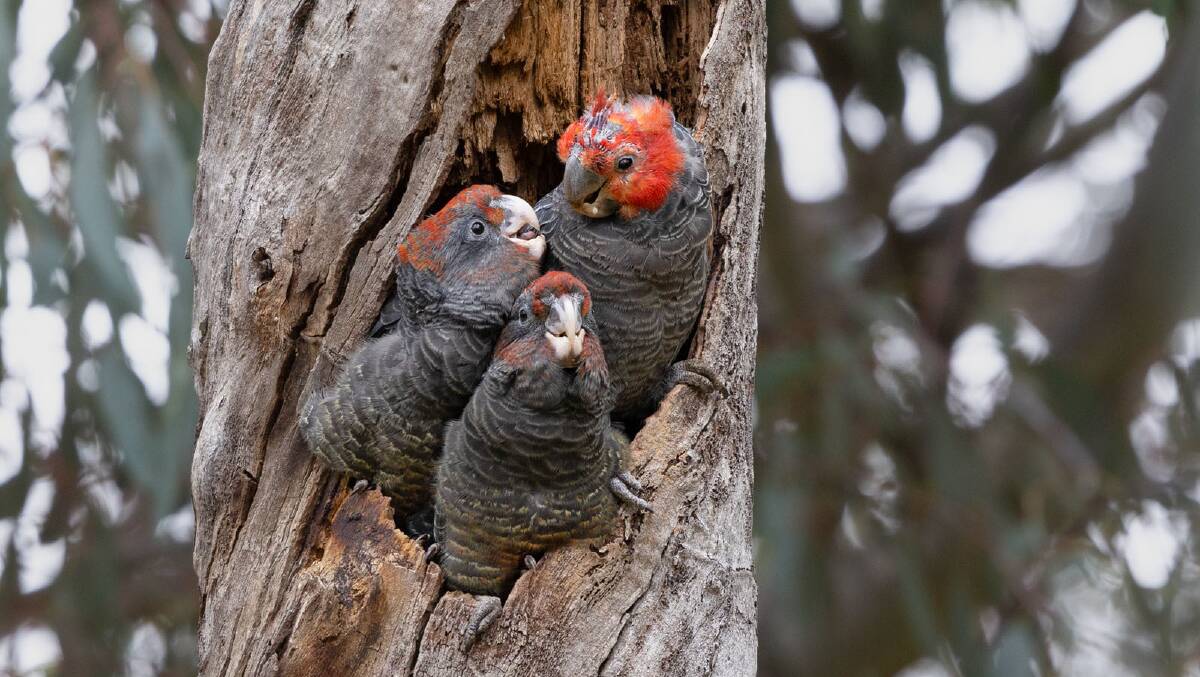
Deep in Aranda bushland, a gang-gang cockatoo chick clambers clumsily up from inside the hollow of a tree.
Precariously, he perches at the entrance to the hollow, trying to keep balance with his tiny feet.
Will he or won't he fly?
Eventually, he flexes part of his left wing. But it's a false start and he quickly retreats into the safety of the hollow.
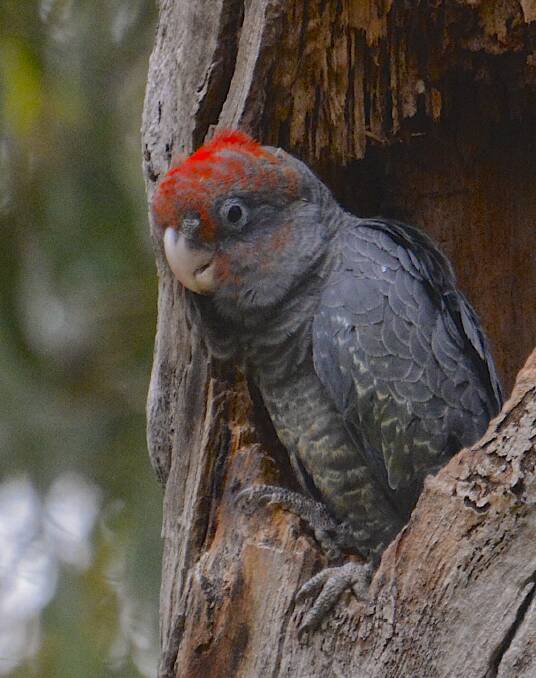
It's a pity, as I'm with Cath Busby of Cook who has been regularly observing this hollow for the last three months, and I wanted to see the look of delight on her face when the chick took its first flight. Not to worry.
Incredibly, just three months ago Cath wasn't even that interested in gang-gangs. Sure, like most of us, she knew they were our faunal emblem (you knew, didn't you?) and recognised their squeaky-gate call.
But that all changed last October when Cath answered a public appeal for sightings of gang-gangs acting inquisitively near tree hollows.
"One day on my regular walk, I noticed a pair of gang-gangs checking out this hollow, so I reported it," says Cath, pointing above me. "Both the female and male sat on the branch opposite and then took turns to fly into the hollow and check it out."
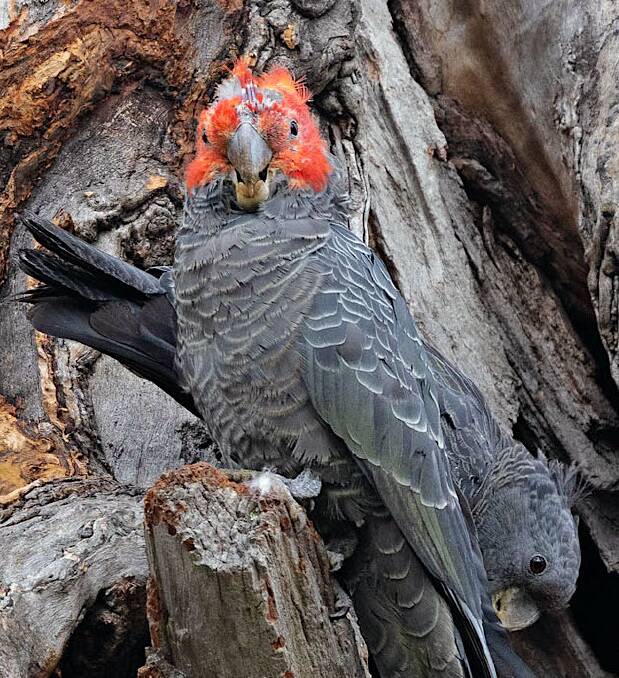
The hollow must have met their approval for since then Cath has spent 100 hours observing the pair nesting and raising their chicks. It's a grand effort, so I guess it's only fitting that the two men behind the citizen science project are also with us today. Michael Mulvaney is co-founder of Canberra Nature Map (an online database of just about everything that lives in the ACT) and Chris Davey a member of the Canberra Ornithologists Group.
"It's surprising just how little we know about the bird," says Michael. "According to BirdLife Australia the gang-gang has experienced a 69 per cent decline in numbers across Australia in the last 25 years."
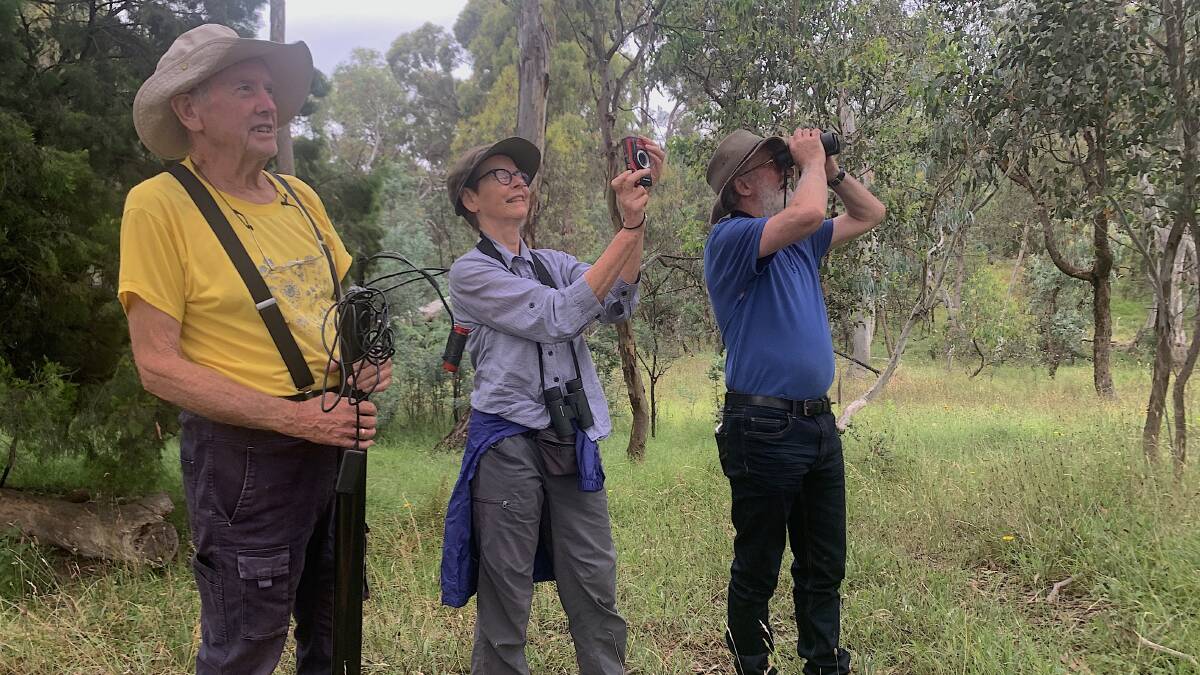
The plight of the gang-gang in the ACT isn't quite so dire. "Thankfully the number of gang-gangs in the ACT has remained fairly constant over this time but it's critical we understand more about the bird before it's too late."
Michael and Chris are especially trying to discover more about the bird's breeding and feeding habits because "understanding those is essential to sustaining the bird's population not only in the ACT but across its entire range in south-eastern Australia".
And boy has the Canberra public responded.
"There are a lot of 'Caths' out there, it's been amazing," says Michael. "So far, Canberra citizens have reported over 1800 individual feeding sites and 550 sightings of gang-gangs looking into or entering hollows - which has led to the discovery of 45 nest trees." That's the vast majority of nest trees known in Australia.
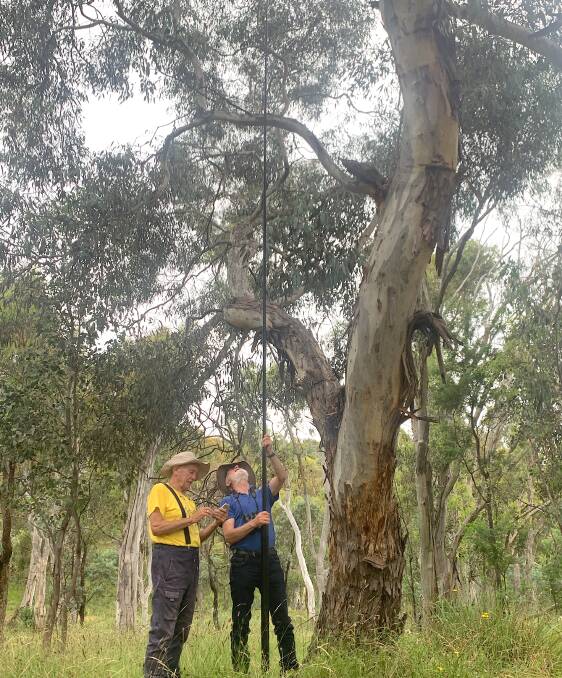
"Knowing the dimensions of the hollows the gang-gangs choose allows us to make nesting boxes for places where there are no natural hollows," says Michael, who along with Chris records the size of the hollows using a small camera on the end of a 12-metre-long pole.
By peeking into the hollows, the duo are also able to gauge if competition from other birds, or predation of possums, is a threat to the gang-gang population.
And so far, the news is good. "Surprisingly, there doesn't seem to be a high level of competition from other cockatoos and possums have only been recorded at around 15 per cent of potential nest sites," says Michael.
The project has also uncovered more information about the diet of the cockatoos.
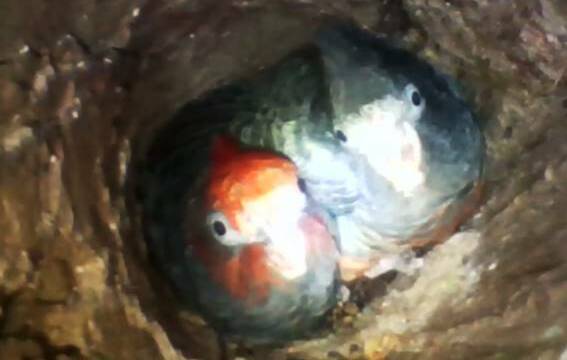
"Previously, we knew they ate 63 types of food but we now know they eat over 200 types of food, from gum nuts to wattle pods to ... cicadas," explains Michael.
"This additional food knowledge is guiding habitat rehabilitation work, while Birdlife Australia are using the information in a guide as to what to plant to attract and help support gang-gangs into your garden or school ground," says Michael.
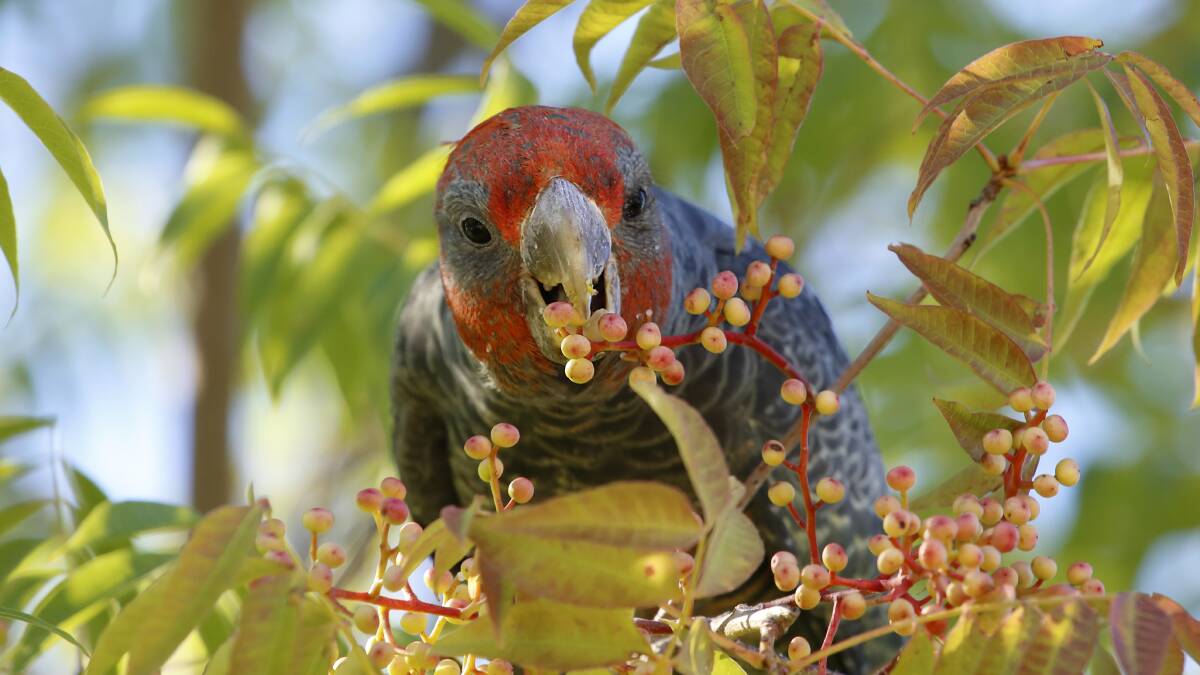
The gang-gangs must have overheard our discussion about food, for we are suddenly interrupted by a flurry of squawking as the father flies into the entrance of the hollow and vigorously feeds the nearly fledged chick.
It's now that I get a better look at the father - the poor fella is missing most of his red crest.
"Oh, that's why he's nicknamed Baldy," explains Chris.
Although the jury is still out as to the reason for his partly featherless head (possibly the result of a disease, or more likely, excessive squabbling with other males), this distinguishing feature has made Baldy somewhat of a poster bird for citizen scientists.
"The gang-gangs' powerful beak and dexterity makes them poor candidates for tagging as they are likely to crush any tag, so tracking Baldy is a great research opportunity," says Michael.
I guess it's a bit like Migaloo, the male albino humpback: Baldy can't go anywhere without someone spotting him.
"Knowing how far adults like Baldy travel to forage while raising chicks and where they spend the winter will help better conserve this iconic species," explains Michael, adding "many eyes are needed".
Just as I'm about to bid farewell to Cath, Michael and Chris, a younger male chick emerges from the hollow and joins his sibling on the edge.
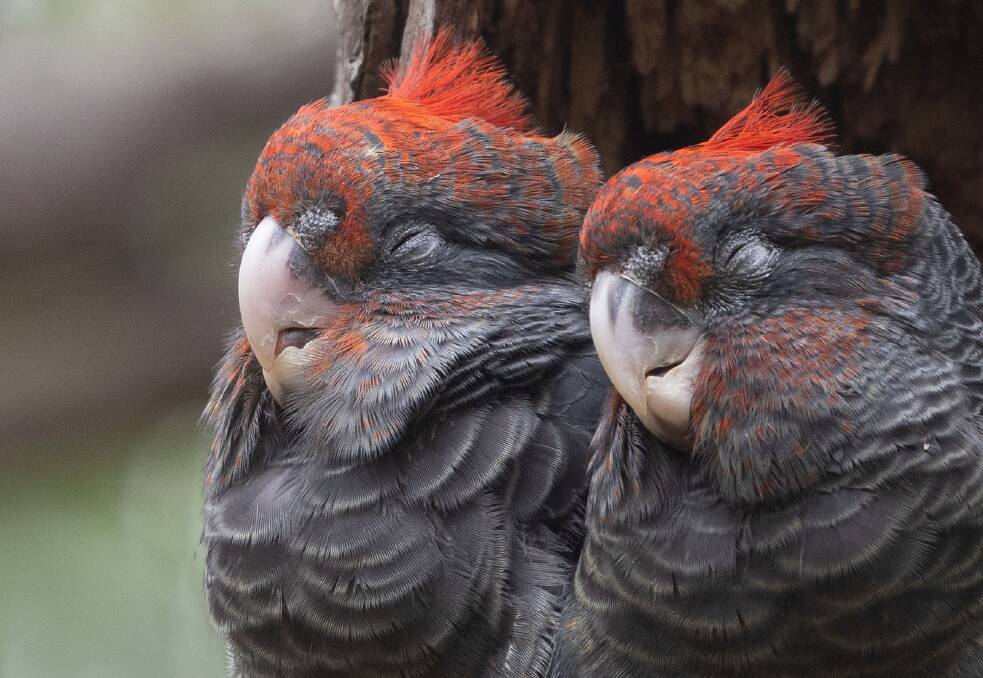
"Oh, that's the first time I've seen them perched together," says Cath, sporting a smile from ear to ear.
Keeping a close watch on the hollow from a nearby tree, Baldy gives a couple of squawks of approval.
Aww, you've got to love nature.
Sightings of Baldy can be reported to https://canberra.naturemapr.org (search for gang-gang cockatoo).
Your guide to spotting gang-gangs in Canberra
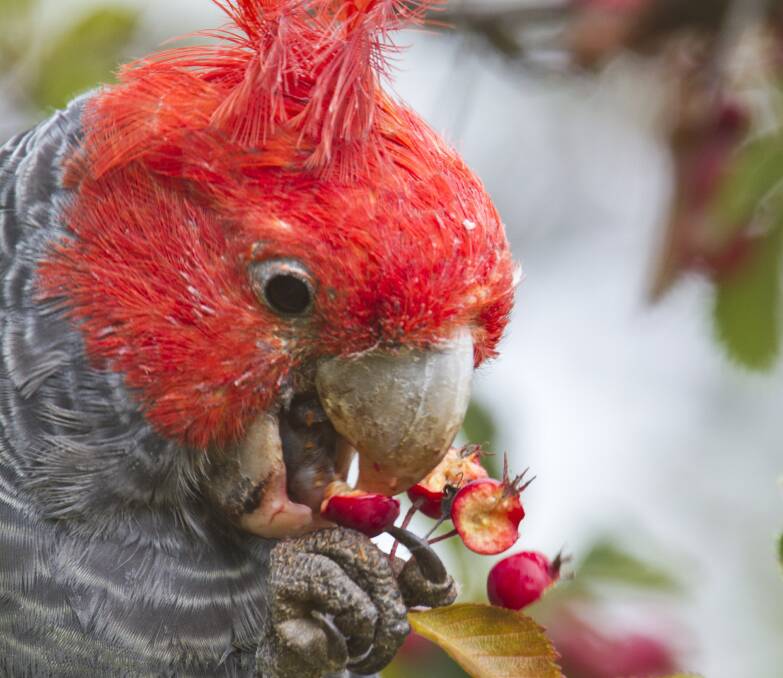
Listen for: A prolonged rasping screech ending with an upward inflection. This is often uttered continuously when in flight and is often described as resembling a creaky gate, or the sound of a cork being pulled from a wine bottle.
Look for: They are usually seen in pairs or small flocks of less than 15. However, on a July morning in1974, ornithologist Joseph Forshaw witnessed 100 gang-gangs come in groups of between 10 and 20 to drink on the Tidbinbilla River.
Best spots: The Botanic Gardens and the suburbs of Weston Creek, Woden, and the inner south.
Did You Know? The gang-gang isn't everyone's best friend.According to Griffith resident Geoffrey Dabb,residents in the inner south don't like the combination of gang-gangs and Hawthorn bushes (Cockspur thorn). "The birds snip off the thorny twigs and the spines can go through car tyres," says Geoffrey. Heck!
Mountain myth? For years it has been thought that many of Canberra's gang-gangs enjoy summer in the cooler mountains to our south and west where they breed before returning to the warmer urban areas of the ACT in winter. Despite this theory the only known nesting sites of the bird are in urban ACT. If you spot a gang-gang nesting site in Namadgi or the Brindabellas, please report it to www.canberra.naturemapr.org/
Hidden hollows: The exact location of gang-gang nesting hollows is kept secret as they are a popular aviary bird and chicks are sometimes collected illegally from the wild.
Stop Press: Today, federal Environment Minister Sussan Ley announced $700,000 in funding for seven new projects aimed at supporting the recovery of the gang-gang after the catastrophic 2019-20 bushfires. "Citizen scientists" like Cath are urged to get involved by recording their sightings of the birds as well as observations about nesting hollow behaviours and what the birds are eating. Further information: www.environment.gov.au/biodiversity/bushfire-recovery.
WHERE IN CANBERRA?
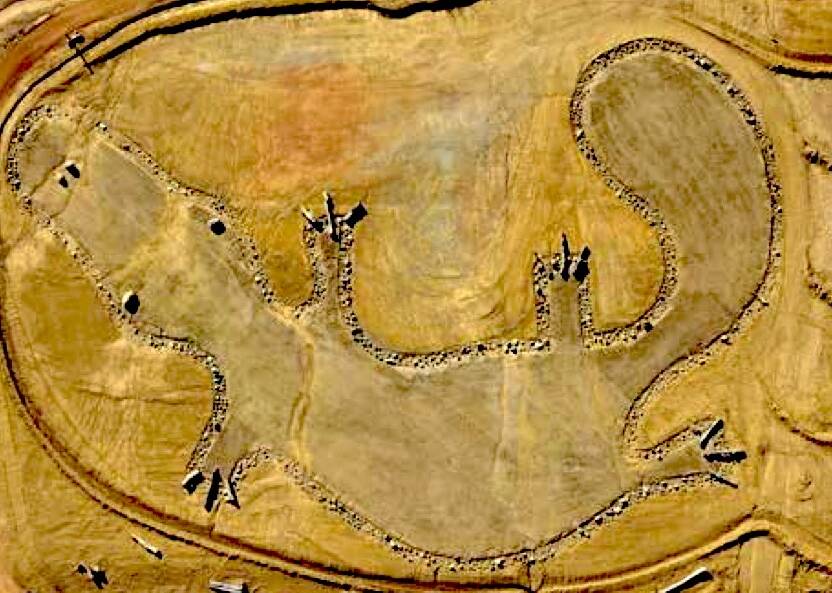
Rating: Difficult
Clue: Not far from a giant wallaroo
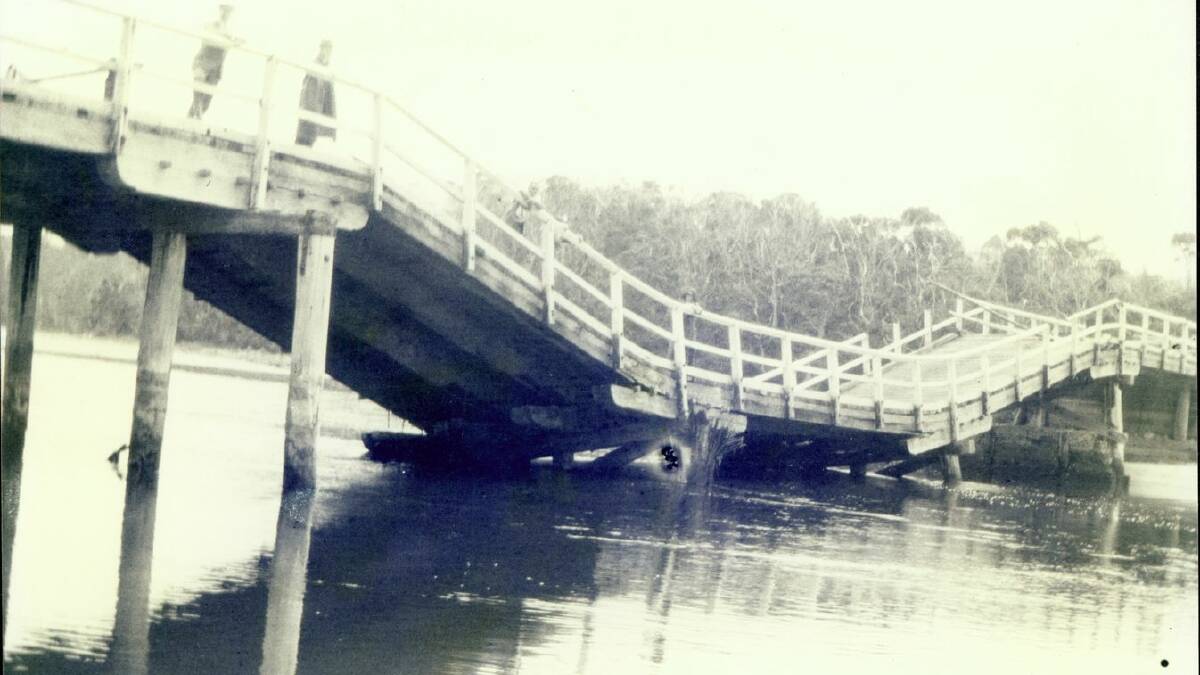
Last week: Congratulations to Steve Leahy of Macquarie who was first to correctly identify last week's photo as the Cuttagee Bridge near Bermagui. Since its construction in 1892, the landmark timber bridge has been extended twice in response to shifting sands. It also suffered major flood damage in 1934 (as per the photo) and again in 1974. As revealed in this column early last year, the bridge currently faces an uncertain future with local council plans to demolish it.
How to enter: Email your guess along with your name and suburb to tym@iinet.net.au. The first correct email sent after 10am, Saturday January 29 wins a double pass to Dendy, the Home of Quality Cinema.
Widow Maker
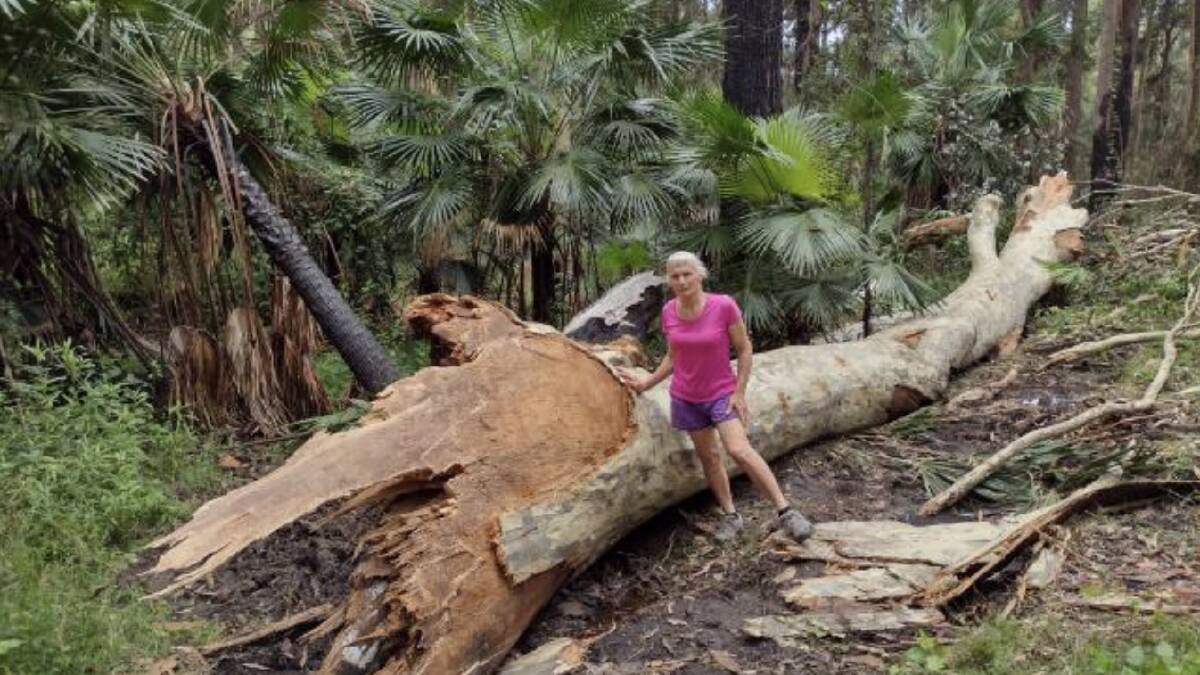
Summer storms have blown this large branch out of the crown of "Old Blotchy", the 400-year-old spotted gum in Murramarang National Park.
Measuring about 3.5 metres wide and rising almost 60 metres above the forest floor, Old Blotchy is regarded as the largest of its kind in the world. Gee, that branch is bigger than many stand-alone trees - lucky no one was standing beneath it when it fell.
SPOTTED
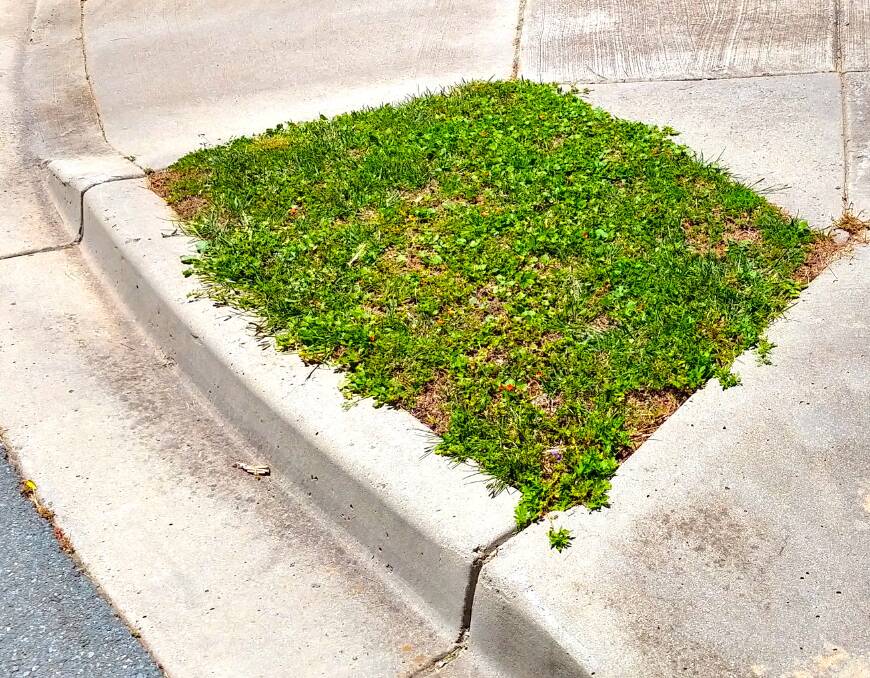
"This micro-lawn in Franklin amuses me each time I walk past with my dog," reports Evan Croker, who wonders if this is the smallest patch of grass in Canberra. Go on, you can beat it, I know you can.







